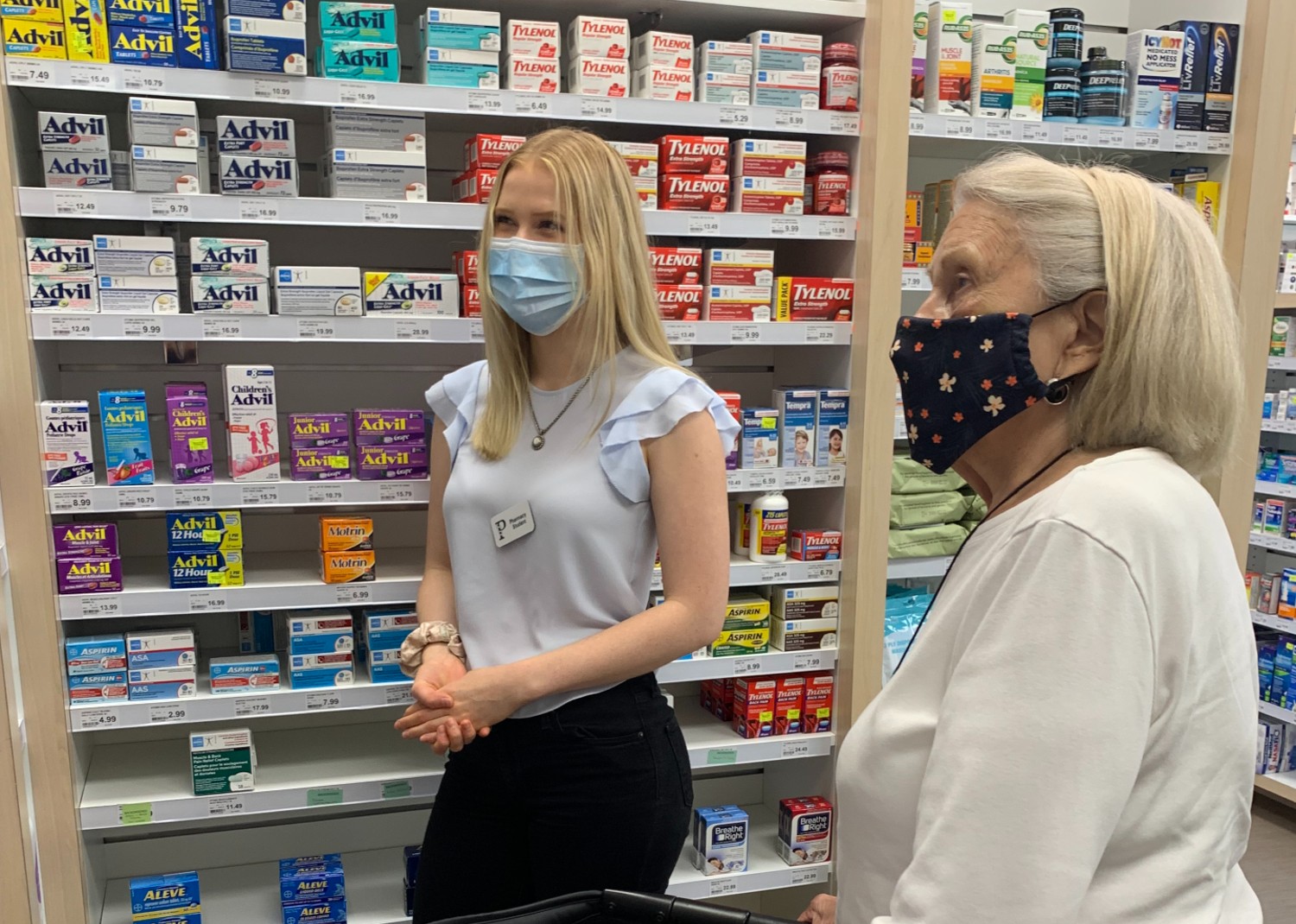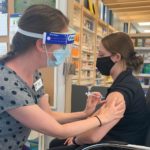
A Patient’s Guide to Osteoporosis
by Anna Hofstra, BScPharm (cand) Dalhousie University, Class of 2022
Did you know?
- Over 2 million Canadians over 40 years old are affected by osteoporosis.
- 1 in 3 women will suffer from an osteoporotic fracture during their lifetime.
- 1 in 5 men will suffer from an osteoporotic fracture during their lifetime.
- Women and men begin to lose bone density in their mid-30s.
- The most common sites of osteoporotic fractures are the wrist, spine, shoulder and hip.

With osteoporosis, bones become thin and
porous which decreases bone strength and
increases the risk of breaking a bone.

So, you’re diagnosed with osteoporosis…now what?
Lifestyle modifications should always be considered in conjunction with drug therapy.
· Regular exercise: incorporate weight bearing, flexibility and balance exercises.
· Fall prevention strategies: minimize hazards for falling around the home like removing throw rugs, installing grab bars in the bathrooms, ensuring each room has adequate lighting.
· Quit smoking, if applicable.
· Balanced diet:
- adequate protein intake
- 800-2,000 IU (20-25 mcg) of vitamin D daily
- 1200mg calcium daily (includes diet and/or supplementation)
- avoid excessive alcohol consumption (>2 drinks/day)
- avoid excessive caffeine consumption (>4 cups of coffee per day).
Drugs for Osteoporosis
Drugs that prevent bone break down and bone re-modeling:
Bisphosphonates are a mainstay treatment for osteoporosis due to their effectiveness, cost, and simple once weekly, once monthly or once yearly dosing. There are three drugs available from this class of medications in Canada: alendronate (Fosamax or Fosavance), risedronate (Actonel) and zoledronate (Aclasta). Side effects most commonly reported with these medications are related to stomach upset and joint pain. The very rare risks associated with bisphosphonates are outlined below.
Denosumab (Prolia) is an injectable therapy given every 6 months that has similar benefits to bisphosphonates. Although, Prolia is less popular than bisphosphonates for two main reasons. The first reason is its increased cost. The second reason is that once this medication has been stopped, all progress in bone density may be lost and the risk of vertebral fractures increases.
Raloxifene (Evista) is an option for post-menopausal women because of its proven benefits in the prevention of vertebral fractures. Patients should be cautioned that on rare occasions Evista has contributed to a clot. However, it can also reduce a woman’s risk of estrogen-receptor positive breast cancer.
Hormone therapy can be prescribed to women experiencing menopausal symptoms, as a treatment for menopausal symptoms and osteoporosis.
Drugs that help rebuild bone and increase bone re-modeling:
Teriparatide (Forteo) is a daily injection, used mainly in patients who have not had success with other osteoporosis drug therapies. Forteo is highly effective at preventing fractures, however it is expensive and after discontinuation progress in bone density may be lost. Patients at high risk of bone cancer should avoid this medication because there was an increased occurrence of bone cancer seen in rats given this medication in high doses.
Putting the risks into perspective for bisphosphonates
Atypical femur fracture (AFF)
There is a small increased risk of AFF with the use of bisphosphonates. Symptoms of AFF include thigh/groin pain. The increased risk of AFF was seen after 2 years of bisphosphonate use and it was mainly seen with alendronate (Fosamax or Fosavance). Although, the risk of AFF decreases after you stop taking these medications. Similar fractures have also been seen before bisphosphonates were available. At that time, they were thought to be osteoporotic fractures, so the cause of these rare fractures remains somewhat unclear.
What we do know:
Using bisphosphonates for 2-4 years was associated with 11 atypical femur fractures per 100,000 patients per year.
The incidence of a “typical” hip fracture is 750-4,200 per 100,000 high risk patients per year.
Therefore, the rare risk of AFF is outweighed by the benefits bisphosphonates present in preventing fractures that could lead to life-changing mobility issues.
Osteonecrosis of the jaw (ONJ)
ONJ is also a rare side effect of bisphosphonates where the jawbone is exposed and not covered by the gums in the mouth. The jawbone can eventually die due to lack of oxygen rich blood. This can be painful but isn’t always. Most cases of ONJ happen after a dental extraction so it is imperative that you tell your dentist if you are taking bisphosphonates! ONJ is most often associated with bisphosphonates and Prolia when patients use these medications in the treatment of bone cancer. These medications are used in very low doses in osteoporosis so the risk of ONJ is very rare in this instance. Older age, diabetes, gum disease and smoking may increase the risk of ONJ. To prevent ONJ practice good oral hygiene and seek regular dental care.
The risk of ONJ is 1 in 10,000 to 1 in 100,000 per year of use and is only slightly increased compared to what is seen in the general population.
_____________________________________
If you enjoyed this content, osteoporosis.ca is a great website where you can learn more about osteoporosis and tips for managing the disease.
If you are left with any questions about your diagnosis or your medications after reading this, please reach out to a Prime Care pharmacist to discuss further.
References:
osteoporosis.ca/fast-facts/
Compendium of Pharmaceuticals and Specialities – Osteoporosis
rheumatology.org/I-Am-A/Patient-Caregiver/Diseases-Conditions/Osteonecrosis-of-the-Jaw-ONJ
osteoporosis.ca/wp-content/uploads/ONJ-Pamphlet-Mar16.pdf
2010 clinical practice guideliens for the diagnosis and management of osteoporosis in Canada: summary
RxFiles – Osteoporosis https://www.rxfiles.ca/rxfiles/uploads/documents/members/Cht-osteoporosis.pdf
Picture 1: https://osteoporosis.ca/what-is-osteoporosis/
Picture 2: https://www.spineuniverse.com/conditions/osteoporosis/osteoporosis-silent-thief








